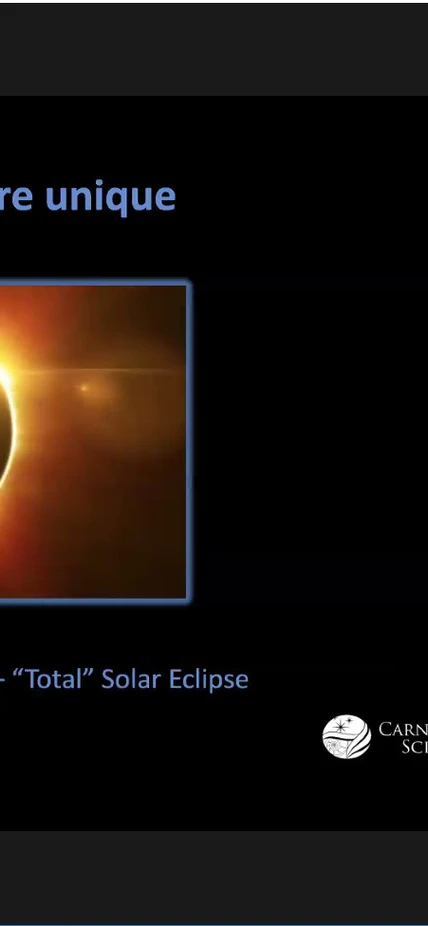Dear Friends,
I hope you are safe and well.
As this year comes to a close, I reflect on the challenges of 2020 and how proud I am of the Observatories’ staff for adjusting to these strange times. Despite all of the hurdles created by the pandemic, we have managed to accomplish great science and continued to advance new methods for astrophysical discoveries.
In mid-March, following California state and Los Angeles County guidelines, the Observatories campus closed and our staff began working from home. As I mentioned in my last letter to you, astronomers are better prepared for working remotely than many other researchers, given that many of our analyses can be accomplished on an ordinary laptop.
But we have nevertheless been eager to take new data and to see what is happening in the night sky. I'm pleased to share that in October we were able to resume remote observing at our Las Campanas Observatory in Chile. This development will enable Carnegie astronomers and planetary scientists to gather new observational data and make new breakthroughs. The undertaking was accomplished by following strict guidelines from the Chilean government and developing a detailed, phased reopening plan for all of Carnegie.
Although we have maintained our physical distance, we have managed to stay in close contact with many of the Observatories' friends and fans. Since my last letter, we have shared two virtual Astronomy Lecture Series talks at the Huntington and hosted our first virtual Open House. Last week, we streamed coverage of the Patagonian total solar eclipse and I answered your questions about how these phenomena occur and what they can teach us. Later today, two of our astronomers will host a virtual stargazing program to share the "great conjunction" of Saturn and Jupiter. One of the few positive outcomes of the COVID-19 pandemic has been our investment in expanding our online outreach and increasing the accessibility of our events.
I am especially excited about the launch of our VizLab, a virtual-reality enabled scientific workspace. Envisioned by Carnegie astronomer Juna Kollmeier and custom designed by Mechdyne Corporation, the lab includes an immersive visualization display system with 35 2D- and 3D-capable flat panels in the shape of a cresting wave. The VizLab is first-of-its-kind technology that will enable Carnegie's theorists to unlock the secrets of the cosmos. I look forward to the breakthroughs that will result from this new tool and I thank the Ahmanson Foundation for their funding.
In closing, I want to thank you as always for your enthusiasm for the Carnegie Observatories. Throughout this strange year, the support of our community has uplifted our spirits and helped us look forward to the future. I can’t wait to share with you what comes next.
Dr. John Mulchaey
Crawford H. Greenewalt Chair and Director of the Carnegie Observatories
